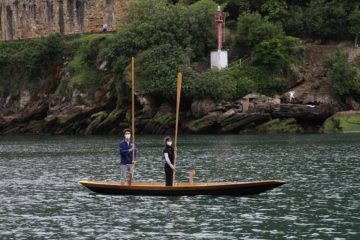This week we closed the hull. All four missing planks have been hanged and the compulsory whiskey bottle has been drunk. But let’s start from the beginning.
We don’t usually work on Monday, so I had the time to go to the junkyard and look for a sheet of some non-ferrous metal for the protections going at the tip of the bow and on the top of the transom.

Unfortunately, I found nothing of the right metal and/or thickness… If it wasn’t something that would have actually protected the boat it didn’t make sense to damage the boat with more fastening, especially in these already delicate parts (transom and breasthook/stem).
The following days we worked on the remaining planks. First the two sides of the bottom go in. These have a very fine tip at the aft end, where there is the biggest curvature, therefore I decided to pre-bend them with heat.
Here in Albaola we commonly do it using a steambox (if you recall, it’s how I bent the planks for the fore deck), but I wanted to try the Venetian way. This video clearly shows how it’s done:
We used a much modern set up, but it was the same in principle.
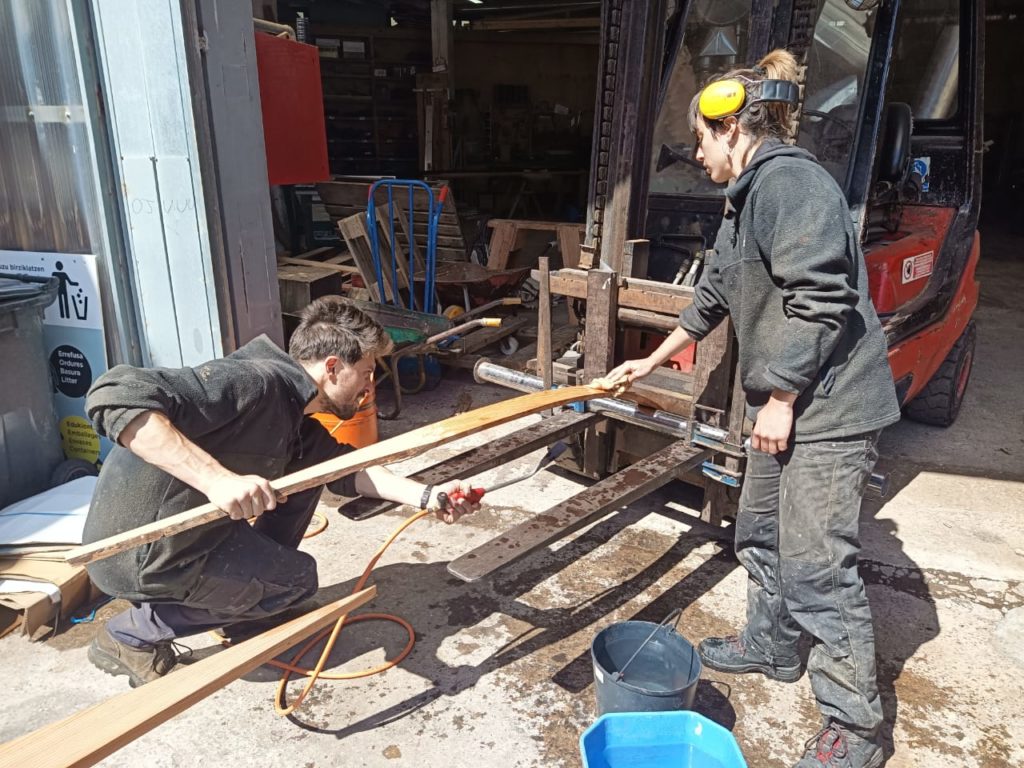
This method is much faster, but leaves some charred scars to the wood. Our boat is going to be painted so it didn’t really matter.

From the following picture you might notice that the central plank is asymmetrically placed. This is simply because we couldn’t find two planks with the same width for the sides of the bottom. The original boat our plans are based on has five bottom planks in total, but we tried to have less seams…
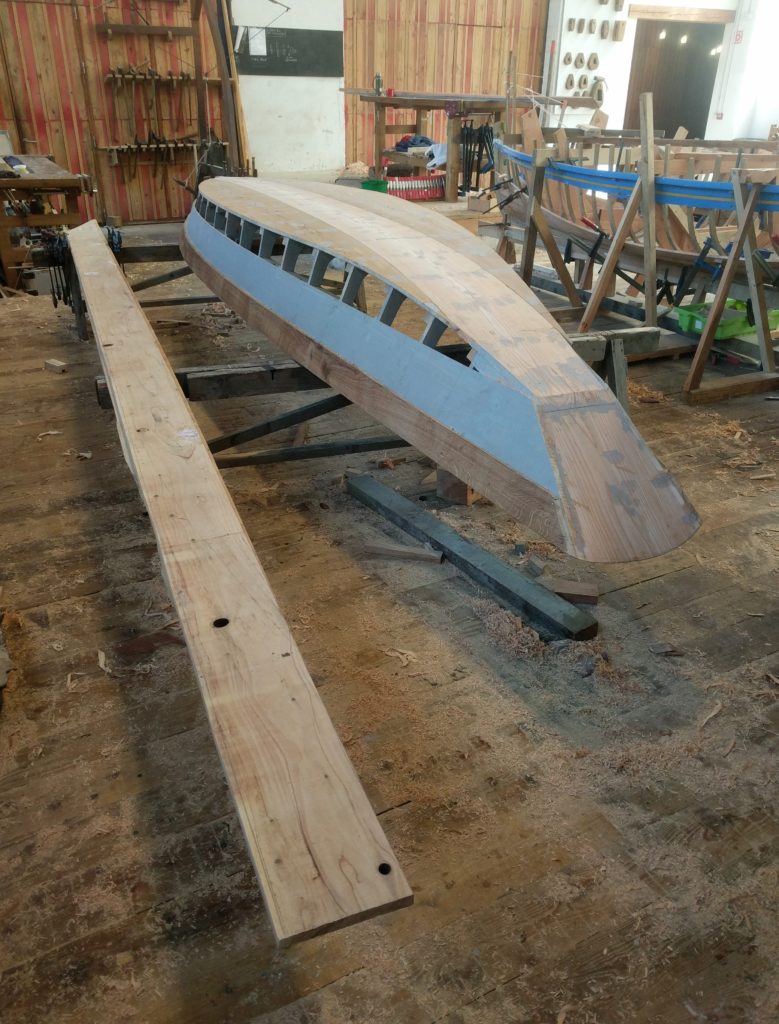
In the Anglo-Saxon boatbuilding world, the last plank is cheered with a bottle of whiskey (from here the term “whiskey plank”). Our teacher is from the U.S.A., so we embraced this tradition.
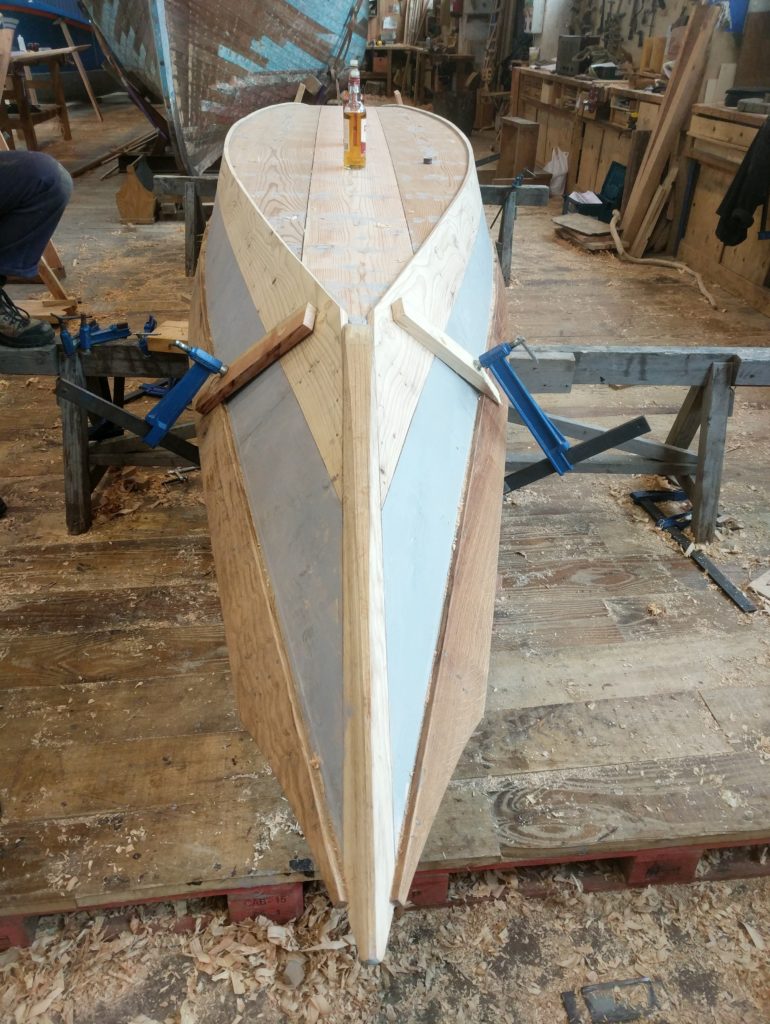
Time for a round of caulking! We chose oakum instead of cotton string, because hemp is what was used traditionally.

These boats don’t have any caulking bevel on the edge of the planks, therefore you have to open up the seams with the iron. Of course, if you hit too hard you might break the plank towards the inside of the boat.
How do I know? Well, try to guess.
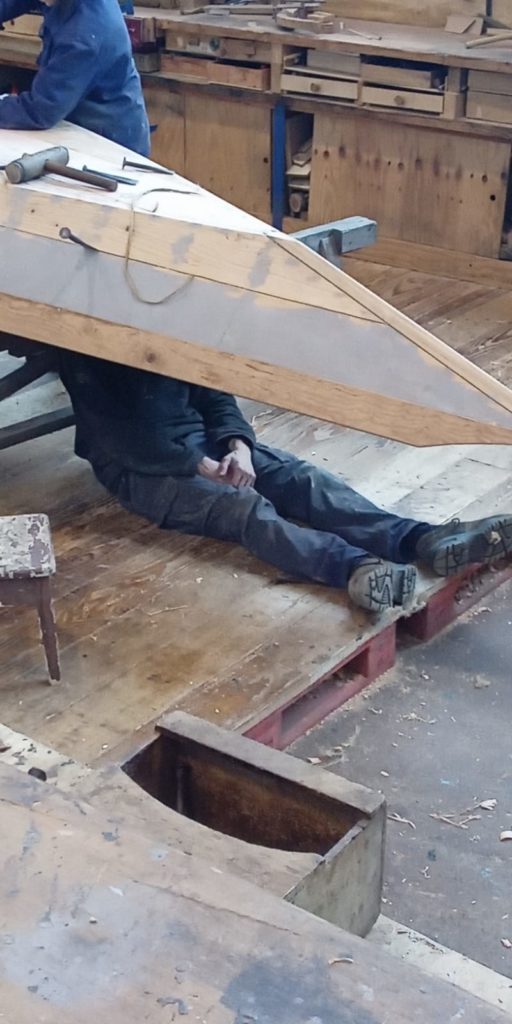

Part of the damage 
I decided to cut out the broken part… 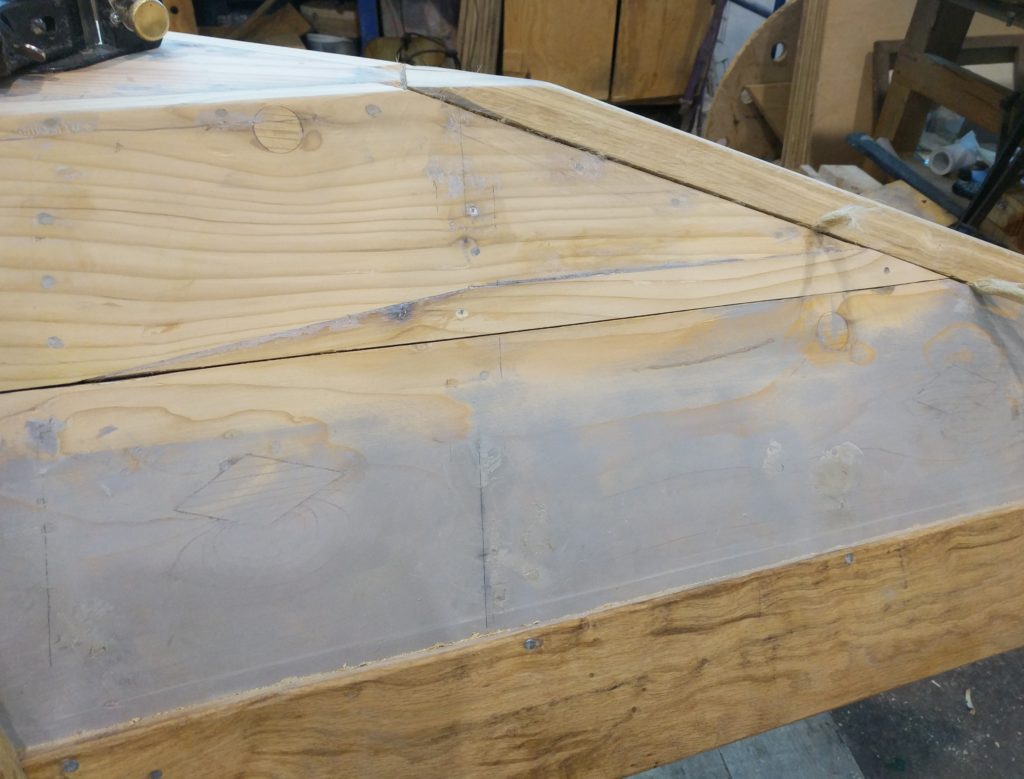
…and to glue a new piece in.
After having given a coat of primer to the bottom, and having paid the seams with linseed oil puddy and primer, we flipped the work to give the finishing touches to the interior.
Last week I forgot to write that I had the shape of the stanchions changed slightly, to better armonize with the angles of the deck. This is particularly noticeable at the aft.

Also the knees at the thwart have reached to their final shape, after much thinking, thanks to a sketch that Gilberto sent me. All the nail heads(although they are galvanized iron) have been covered by a mix of beeswax and resin, in order to try to further delay corrosion.
We then sanded everything, in and outside, and gave the boat a second coat of primer.

Next week is the last one: launching date will be Saturday 22nd. We have less than a week left.
Before then, we’ll have to build the floor, for which we already milled up some larch, and then sand, paint, sand, and paint again. We have some colors in mind, but no spoilers until next week, bye!
